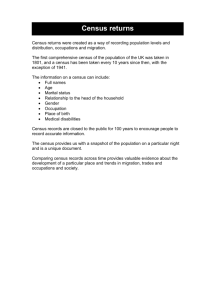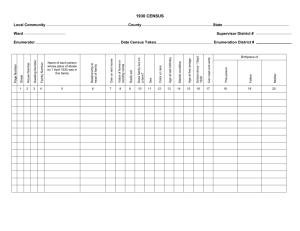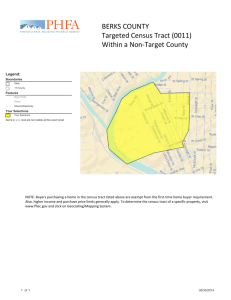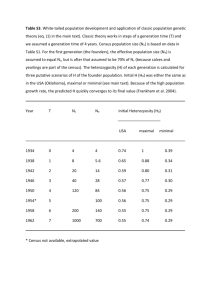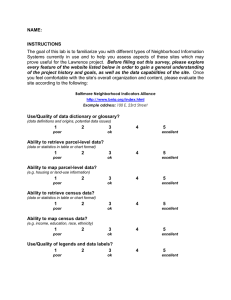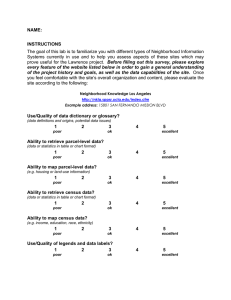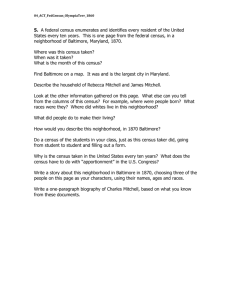Research Methods in American Culture
advertisement
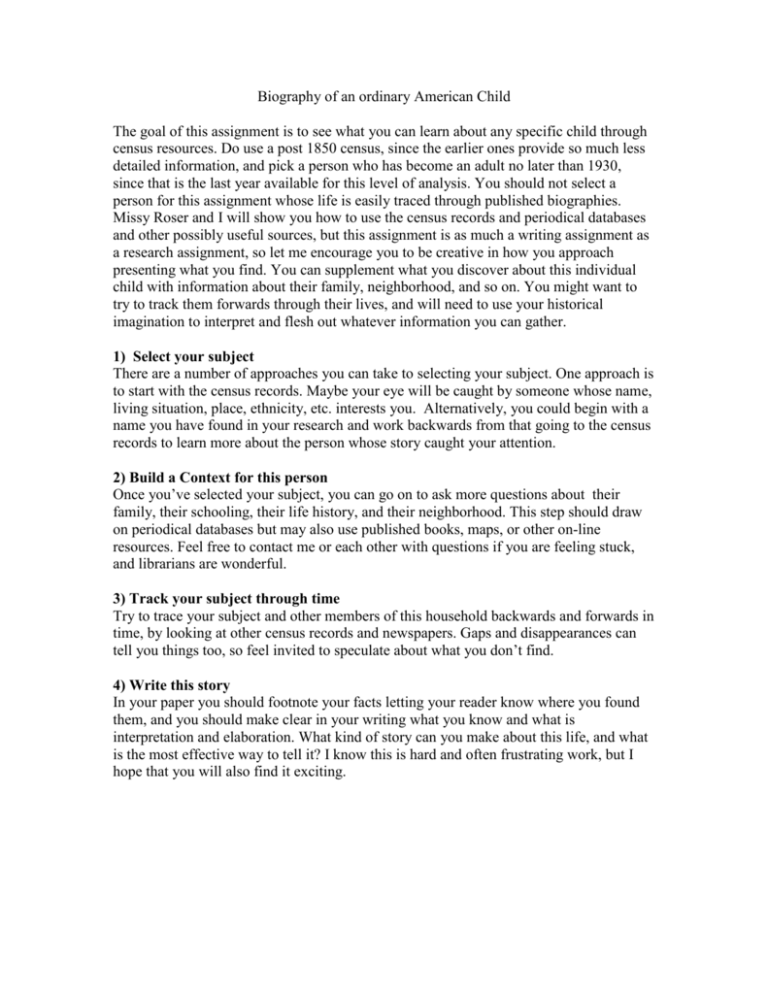
Biography of an ordinary American Child The goal of this assignment is to see what you can learn about any specific child through census resources. Do use a post 1850 census, since the earlier ones provide so much less detailed information, and pick a person who has become an adult no later than 1930, since that is the last year available for this level of analysis. You should not select a person for this assignment whose life is easily traced through published biographies. Missy Roser and I will show you how to use the census records and periodical databases and other possibly useful sources, but this assignment is as much a writing assignment as a research assignment, so let me encourage you to be creative in how you approach presenting what you find. You can supplement what you discover about this individual child with information about their family, neighborhood, and so on. You might want to try to track them forwards through their lives, and will need to use your historical imagination to interpret and flesh out whatever information you can gather. 1) Select your subject There are a number of approaches you can take to selecting your subject. One approach is to start with the census records. Maybe your eye will be caught by someone whose name, living situation, place, ethnicity, etc. interests you. Alternatively, you could begin with a name you have found in your research and work backwards from that going to the census records to learn more about the person whose story caught your attention. 2) Build a Context for this person Once you’ve selected your subject, you can go on to ask more questions about their family, their schooling, their life history, and their neighborhood. This step should draw on periodical databases but may also use published books, maps, or other on-line resources. Feel free to contact me or each other with questions if you are feeling stuck, and librarians are wonderful. 3) Track your subject through time Try to trace your subject and other members of this household backwards and forwards in time, by looking at other census records and newspapers. Gaps and disappearances can tell you things too, so feel invited to speculate about what you don’t find. 4) Write this story In your paper you should footnote your facts letting your reader know where you found them, and you should make clear in your writing what you know and what is interpretation and elaboration. What kind of story can you make about this life, and what is the most effective way to tell it? I know this is hard and often frustrating work, but I hope that you will also find it exciting.




